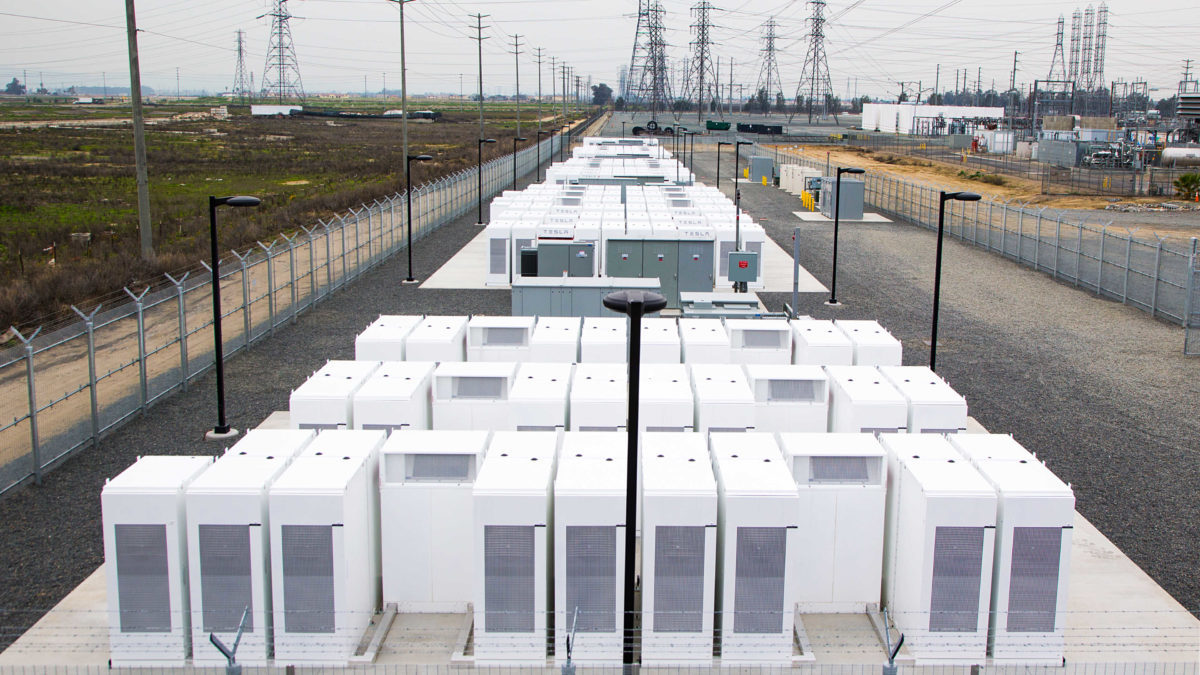From pv magazine USA
We know energy storage is coming. The question is: How much and how fast? Tesla showed us that they’d rather build cars versus energy storage installations, and that makes sense since more than 90% of their revenue is from cars. And Bloomberg recently reminded us that the whole of the industry is in a situation of greater demand than supply. Nonetheless, the potential is there and the manufacturing capacity is growing immensely.
In a report commissioned by the Public Utilities Commission of Nevada and Nevada Governor’s Office of Energy, the Brattle Group found that over the next year and a half 175 MW / 700 megawatt-hours (MWh) of energy storage could be deployed while saving money for ratepayers. The Economic Potential for Energy Storage in Nevada (92 page PDF), also found that by 2030 – depending on how pricing moves – 700 to 1,000 MW of energy storage can be effectively deployed. Additionally volume could be found behind-the-meter, as deployments could range from 30 to 40 MW / 120 to 160 MWh by 2030.
These numbers are particularly interesting in light of Warren Buffet’s NV Energy recently signing contracts including 100 MW / 400 MWh of energy storage.

The report made its judgments on value of the energy storage based on power grid benefits (noted on the right of the chart above). What was not included in the chart below were the societal emissions-related impacts of up to $10.6 million per year in 2020, and $27 million a year in 2030, as these items aren’t reflected in electricity bills.
The report suggests there is also a chance to expand the volumes deployed by large amounts with ever so slight adjustments in how we recognize the value provided by energy storage or through declines in the cost of deploying energy storage. The report also notes that if a regional market develops, beyond 1,000 MW is a possibility.

The high and low pricing ranges lain out by Brattle are described above. Noted from the report:
For 2030, we assume installed costs of $876/kW to $1,314/kW (or $219/kWh to $328/kWh for installations with four-hour storage capability).
To remind our readers one more time: 74% of residential solar customers are interested in energy storage, and they are putting money down as we saw Q1 grow 9X and Q2 grow 10X (mostly in Hawaii and California for now). The Brattle report also notes that the findings in this study are aligned with findings of studies done in Massachusetts, New York and Texas, so we should assume there is a nationwide marketplace coming. NREL has suggested that the due to demand charges in the C&I sector, energy storage is viable for 5 million customers nationwide right now.
This content is protected by copyright and may not be reused. If you want to cooperate with us and would like to reuse some of our content, please contact: editors@pv-magazine.com.



By submitting this form you agree to pv magazine using your data for the purposes of publishing your comment.
Your personal data will only be disclosed or otherwise transmitted to third parties for the purposes of spam filtering or if this is necessary for technical maintenance of the website. Any other transfer to third parties will not take place unless this is justified on the basis of applicable data protection regulations or if pv magazine is legally obliged to do so.
You may revoke this consent at any time with effect for the future, in which case your personal data will be deleted immediately. Otherwise, your data will be deleted if pv magazine has processed your request or the purpose of data storage is fulfilled.
Further information on data privacy can be found in our Data Protection Policy.